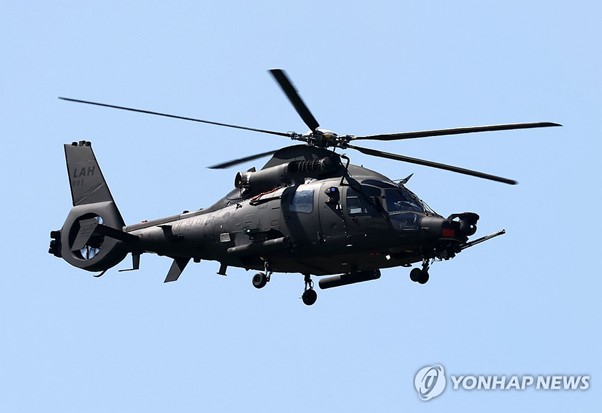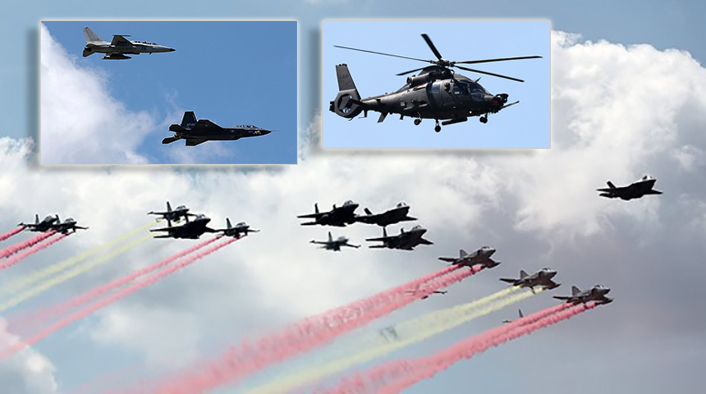ROKAF rehearsed a massive flypast for South Korea’s 75th Armed Forces Day.
On Sept. 26, 2023, the South Korean military conducted its first Armed Forces Day parade in ten years through the streets of Seoul. Although on the day of the event the flypast was cancelled due to poor visibility, the final rehearsal that took place the day before gave a pretty good indication to what could have been. With most fixed wing and rotary wing platforms in the ROKAF inventory making an appearance, a clear insight of the force’s operational fleet was noted.
A total of 76 fixed wing aircraft of 11 different types and 54 rotary platforms of 9 different types made an aerial appearance, with UAVs of various different sizes were displayed on the ground as well.
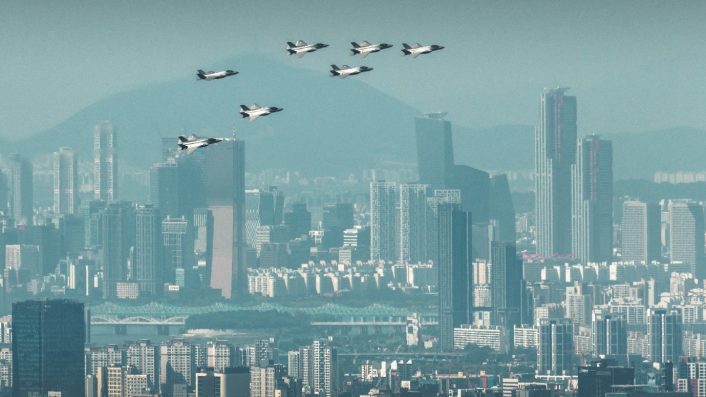
An interesting mixed formation.
A noticeable display was the formation flight showcasing the current ROKAF fighter force. With the new F-35A (local designation Freedom Knight) leading the formation, a wing of F-15K (variant of the F-15E Strike Eagle) flanked by F-5E, F-4Es, and FA-50s flew over Seoul Air Base. Both F-4E and F-5E are in the process of sequential retirement, being replaced by F-35A and the still in testing KF-21. In the case of the Phantom II, the ROKAF have stopped major overhauls of the aircraft in 2020.
Instead, they have been steadily replacing the F-4E fleet with the steady influx of F-35As. South Korea has received the first of its 40 F-35As in 2019 and have been constantly getting new deliveries of them since. Furthermore, the Ministry of National Defense announced that it will be ordering 25 more this September.
As a side note there are ongoing talks for the ROK Navy to order 20 F-35Bs for their upcoming CVX class aircraft carriers.
The F-5E Freedom Fighters are also in a similar situation, awaiting their inevitable replacement by the KF-21. Due to the programme’s delay, the ROKAF have been extending the aircraft’s service life up to 2030. However, after the crash of a twin seater variant KF-5E crashed in 2022, plans to extend its service life have been swapped with a fluid plan of procuring additional FA-50 and KF-21s to fill the power gap. Thus, seeing a formation of F-5E and F-4Es along with other aircraft were a rather rare sighting.
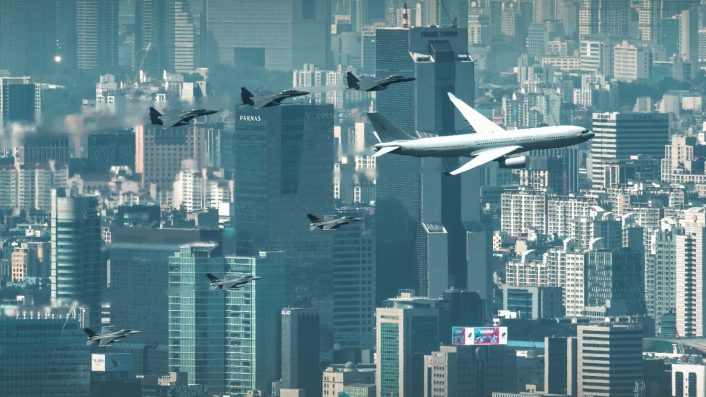
Various indigenous platforms
Along with the flypast, the ROK Armed Forces also conducted a ground parade, in which various platforms still in their prototype phase was unveiled. The most prominent feature was the formation flight of the KF-21 and the FA-50. This time the sixth KF-21 prototype #006 flew for the public. This specific aircraft is the final prototype to be built and along with #004 is one of two twin seater Boramaes built.
The twin seater variant of the KF-21 was envisioned partly due to the ROKAF’s preference for operating twin seater fighter aircraft whenever possible. This is likely suspected to be for ease of conversion training, easier operation of weapons systems, and to lessen the pilot’s workload under high intensity scenarios.
In specific, the request for a twin seater KF-21 was made for the provision of electronic warfare aircraft and Manned Unmanned Teaming (MUM-T) control for battlefield drone missions. As of now it is not yet known how many of the 160 planned KF-21s will be twin seaters for the ROKAF.
An initial batch of 40 Block I KF-21s are expected to enter service between 2024 to 2028, with 80 Block IIs to follow shortly from 2029 to 2032. Although the total number of airframes are confirmed to be 160, it is unclear which variation the remaining 40 will be allotted to. It should be noted that the manufacturer, Korean Aerospace Industries (KAI), has plans for Block III onwards and the ROKAF wishes to ultimately reach 500 KF-21s by the end of the KF-X program, although this is a rather optimistic dream considering the current budget allotted to the air force.
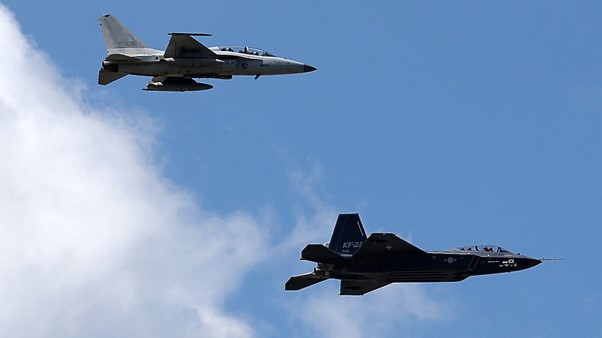
Another airframe undergoing trials is KAI’s Light Armed Helicopter (LAH). Developed in conjunction with the commercial variant Light Civil Helicopter (LCH), the LAH is set to be South Korea’s second helicopter after the KUH-1 Surion. The LAH is set to replace the Republic of Korea Army’s MD 500s and Bo 105 starting from the winter of 2024.
With the helicopter achieving Initial Operating Capability (IOC) in 2020, the LAH has been undergoing trials within the Korean Army. The airframe itself was developed by a partnership between KAI and Airbus Helicopters, utilising the latter’s AS565/H155 as a basis. As an armed scout platform, the LAH is armed with a 20mm cannon, along with hardpoints for 70mm unguided rockets or four TAipers anti-tank guided missile (ATGM)s.
